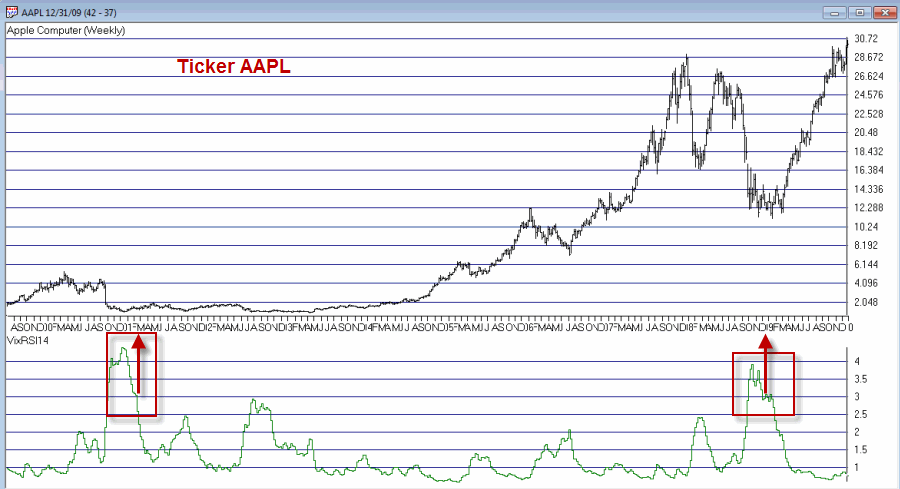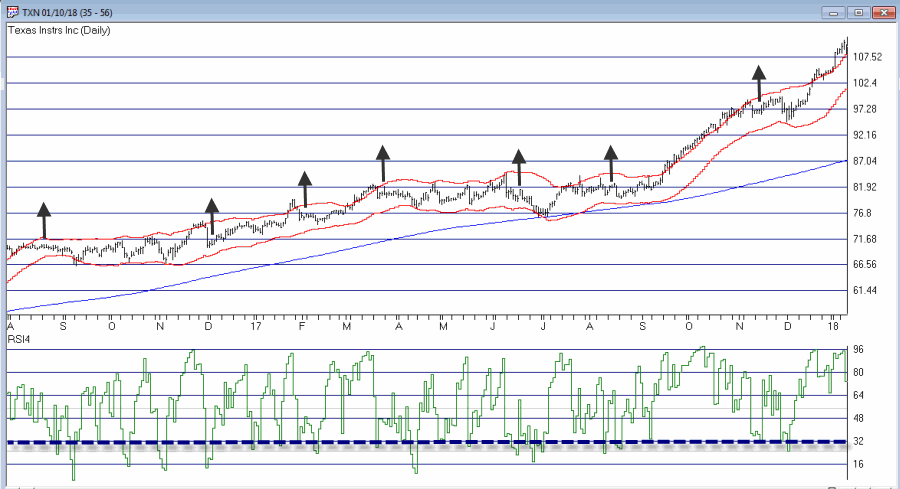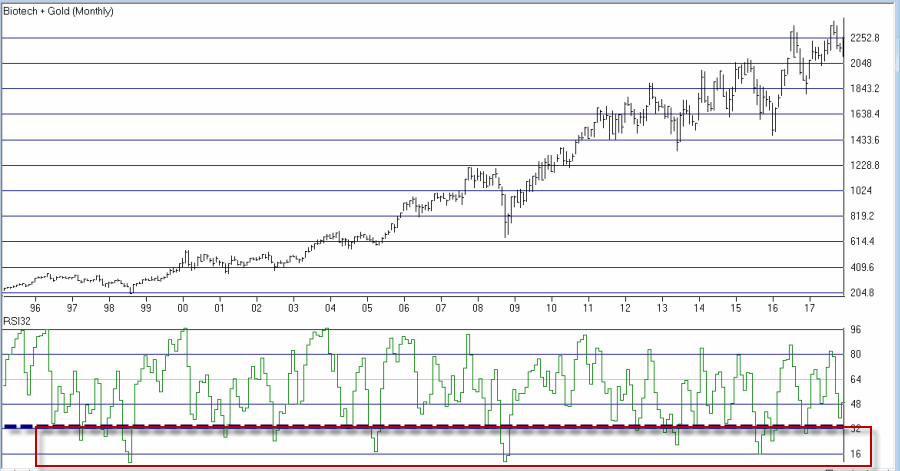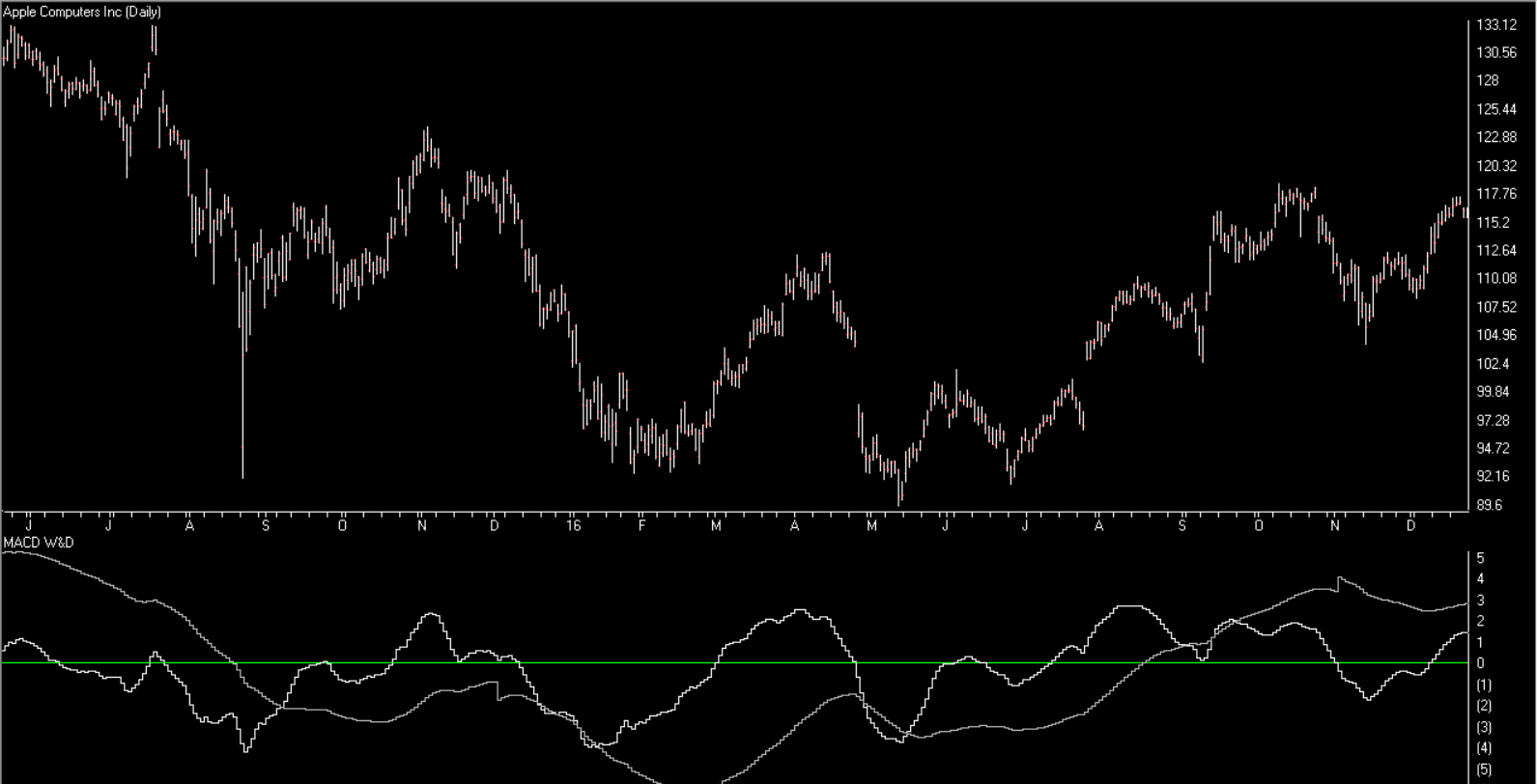
The VixRSI14 Indicator – Part 2


While the bulk of the financial world focuses most of its attention on whether or not Bitcoin will turn to sh, er, something that rhymes with Bitcoin, a lot of “old timers” continue on with trying to look at markets in a more traditional way. Unfortunately, some people who try to look at markets in a more traditional way also spend an inordinate amount of time “dividing one number by another” thinking there is some purpose to it (“Hi. My name is Jay”)
The only good news is that every once in awhile something useful – or at least potentially useful (since no single calculation guarantees profitability which also involves other “minor” issues such as which securities to trade, allocation size, entry method, profit taking criteria, stop loss triggers and so on and so forth). A number of years ago I stumbled upon a calculation that I ultimately refer to as VixRSI (for reasons that will become fairly obvious soon). More specifically I have a few different versions but one I like is call used VixRSI14.
First the Good News: In this and some future articles I will detail how I apply VixRSI14 to monthly, weekly and daily price charts.
Now the Bad News: Nothing that I will write in any of those articles will detail a “simple automated system that generates you can’t lose trading signals guaranteed to make you rich beyond the dreams of avarice.” Sorry about that. But I thought you should know.
The truth is that the indicator generates signals – and yes, a certain percentage of the time those signals aren’t that great. And even on occasions when the signals are decent all of the factors I mentioned above (securities traded, capital allocation, etc.) still hold the key to turning a “signal” into a “profit”.
VixRSI14
VixRSI14 is calculated by combining Larry William’s “VixFix” indicator with the standard old 14-day RSI from Welles Wilder. I’ve decided to put the calculations at the end of the article in order to avoid scaring anyone off.
For now let’s look at what to look for on a monthly price chart.
VixRSI14 on a Monthly Chart
OK, true confession time: there is (at least as far as I can tell) no “one best way” to use VixRSI14 on a monthly chart. So I will simply show you “One way.”
*A “buy alert” is triggered when the monthly value for VixRSI14 first rises to 3.5 or higher and then drops back to 3.0 or below
*Before going on please note that there is nothing “magic” about 3.5 or 3. Different values can be used and will generate varying results.
*Also, some may prefer to simply look for a drop from above 3 to below 3 without requiring a move above 3.5
*Finally please note the use of the phrase “buy alert” and the lack of the phrase “BUY AS MUCH AS YOU CAN RIGHT THIS VERY MINUTE!!!!”
Figures 1 through 4 show several different Dow30 stocks “through the years.
Figure 1 – Ticker AXP (Courtesy AIQ TradingExpert)
Figure 2 – Ticker BA (Courtesy AIQ TradingExpert)
Figure 3 – Ticker HPQ (Courtesy AIQ TradingExpert)
Figure 4 – Ticker IBM (Courtesy AIQ TradingExpert)
Summary
Buy alerts on monthly charts using the criteria I described are obviously very rare. In fact many securities never see the VixRSI14 rise high enough to trigger an alert. Likewise, not every 3.5 then 3 event for every stock will work out as well as those depicted in Figures 1 through 4.
Still, remember that I am just presenting an “idea” and not a finished product.
Code:
William’s VixFix is simply the 22-day high price minus today’s low price divided by the 22-day high price (I then multiply by 100 and then add 50). That may sound complicated but it is not.
The code for AIQ TradingExpert appears below.
########## VixFix Code #############
hivalclose is hival([close],22).
vixfix is (((hivalclose-[low])/hivalclose)*100)+50.
###############################
####### 14-period RSI Code ###########
Define periods14 27.
U14 is [close]-val([close],1).
D14 is val([close],1)-[close].
AvgU14 is ExpAvg(iff(U14>0,U14,0),periods14).
AvgD14 is ExpAvg(iff(D14>=0,D14,0),periods14).
RSI14 is 100-(100/(1+(AvgU14/AvgD14))).
###############################
VixRSI14 is then calculated by dividing the 3-period exponential average of VixFix by the 3-period exponential average of RSI14
####### VixRSI14 Code ###########
VixRSI14 is expavg(vixfix,3)/expavg(RSI14,3).
###############################
Jay Kaeppel
Disclaimer: The data presented herein were obtained from various third-party sources. While I believe the data to be reliable, no representation is made as to, and no responsibility, warranty or liability is accepted for the accuracy or completeness of such information. The information, opinions and ideas expressed herein are for informational and educational purposes only and do not constitute and should not be construed as investment advice, an advertisement or offering of investment advisory services, or an offer to sell or a solicitation to buy any security.
 Figure 2 – Ticker TXN with Example “Entry Triggers” (Courtesy AIQ TradingExpert)
Figure 2 – Ticker TXN with Example “Entry Triggers” (Courtesy AIQ TradingExpert) Figure 1 – Jay’s BioGold Index (Courtesy AIQ TradingExpert)
Figure 1 – Jay’s BioGold Index (Courtesy AIQ TradingExpert) Figure 2 – The BioGold Index with RSI32 (drop to 33 or below = BUY) (Courtesy AIQ TradingExpert)
Figure 2 – The BioGold Index with RSI32 (drop to 33 or below = BUY) (Courtesy AIQ TradingExpert)| Buy Signal | Sell Signal | FBIOX+FSAGX % +(-) |
| 4/30/1992 | 12/31/1992 | +14.4% |
| 2/26/1993 | 4/30/1993 | +14.7% |
| 4/29/1994 | 9/30/1994 | +7.2% |
| 12/30/1994 | 4/28/1995 | +9.8% |
| 4/30/1997 | 9/30/1997 | +18.4% |
| 11/28/1997 | 4/30/1998 | +10.4% |
| 6/30/1998 | 12/31/1998 | +16.1% |
| 3/30/2001 | 6/29/2001 | +22.7% |
| 7/31/2002 | 12/31/2002 | +18.1% |
| 7/30/2004 | 10/29/2004 | +11.2% |
| 3/31/2005 | 7/29/2005 | +10.2% |
| 4/30/2008 | 7/31/2008 | +9.4% |
| 9/30/2008 | 6/30/2009 | +3.8% |
| 5/31/2012 | 9/28/2012 | +20.0% |
| 2/28/2013 | 2/28/2014 | +28.6% |
| 8/31/2015 | 4/29/2016 | +22.2% |
| 12/30/2016 | 2/28/2017 | +13.2% |
| Average % | +14.7% | |
| Median % | +14.4% | |
| Std. Deviation % | 6.4% | |
| Max % +(-) | +28.6% | |
| Min % +(-) | +3.8% |

!WEEKLY & DAILY MACD !Author: Vitali Apirine, TASC Dec 2017 !Coded by: Richard Denning 10/13/17 !www.TradersEdgeSystems.com !INPUTS: S is 12. L is 25. EMA1 is expavg([Close],S). EMA2 is expavg([Close],L). EMA3 is expavg([Close],S*5). EMA4 is expavg([Close],L*5). MACD is EMA1 - EMA2. MACDW is EMA3 - EMA4. rdMACD is MACD + MACDW.